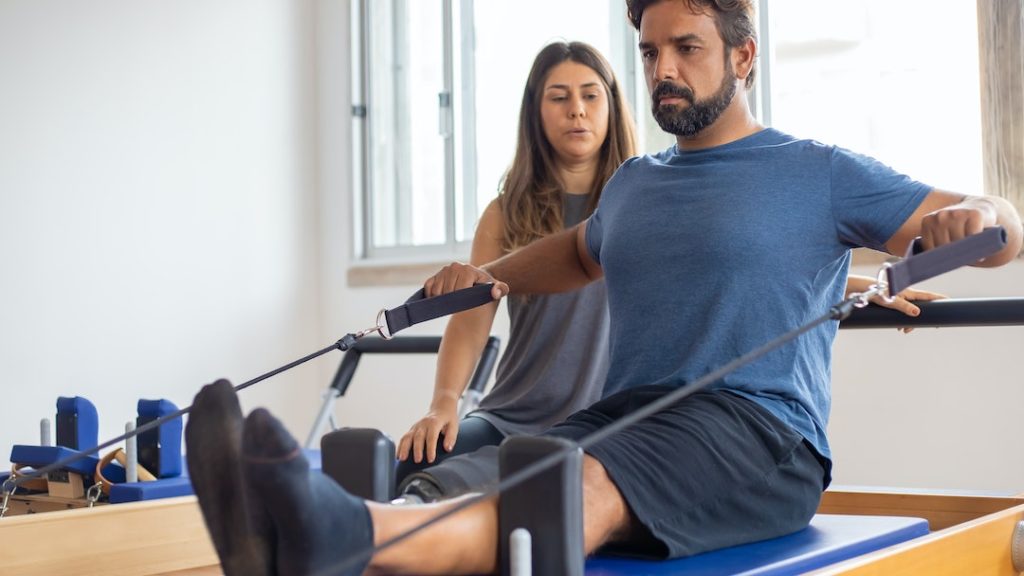What are the biceps tendon injuries?
There are two tendons that attach the muscle to the scapula bones at the shoulder and one that attaches to the radius bones at the elbow. We move our limbs thanks to tendons, which connect muscles to bones.
Biceps tendon injury types
As a result of the severity and location of the injury, bicep tendon tears fall into three categories. Additionally, tendons can be torn partially or completely (when the tendon detaches entirely from the bone).
- Shoulder proximal biceps tendonitis
When a bicep tendon tears, the shoulder is injured. There is a greater chance of tearing the long head tendon than the short head tendon. Normal tendon fraying can cause this type of tear, but accidents can also cause it.
In this injury, only one part of the tendon is likely to tear. As a result, your arm is usually still usable. Despite this, a torn bicep tendon may also damage other parts of the shoulder.
Related: How to Cure Frozen Shoulder Quickly (& Safely)
- An injury to the proximal biceps tendon at the shoulder
The long head of the bicep tendon is inflamed or irritated during tendonitis. Microtears can result from this. It is common for tendonitis of the long head of the biceps tendon to occur due to normal wear and tear, although it can also be exacerbated by repetitive motion. This condition is often associated with shoulder impingement, chronic shoulder dislocation, and arthritis.
- Tear at the elbow due to distal biceps tendonitis
When the elbow is pushed straight against a heavyweight, the bicep tendon is torn at the elbow. A complete tear of the tendon usually results from this type of stress.
If you tear your bicep tendon at the elbow, your other arm muscles will compensate, so there will be no restriction in your range of motion. In the event that the tendon isn’t repaired, your arm will likely lose strength.
There is a low incidence of bicep tendon tears at the elbow. There are approximately three to five cases per 100,000 people each year. Women are also less likely to experience them.
Inflammation of the distal biceps tendon is known as distal biceps tendonitis. Repetitive motion can aggravate the condition. Normal wear and tear usually causes it.
If your suffering from a bicep tendon injury and the pain is stopping you from enjoying your daily activities, try Herbal Ice. Our Herbal Muscle Rub combines the cooling pain relief of menthol and a blend of known anti-inflammatory ingredients.
What are the symptoms?

It is likely that the first symptom you will notice will be a sudden, severe pain in the elbow or the upper arm, depending on the location of the injured tendon. When a tendon tears, you may hear or feel a “pop.” Other symptoms you may experience if you’ve torn your biceps tendon are as follows:
- Feeling a sharp pain in your shoulder or elbow.
- Weakness in the elbow or shoulder.
- Bruises appear on the elbow or upper arm.
- Your upper arm’s biceps’ front contour is altered (“Popeye muscle”).
- Having trouble rotating your arm from the “palm down” to the “palm up” position.
How to Help Recover Naturally
Bicep tears are treated according to their severity, as well as whether you injured other parts of your body, such as your rotator cuff, during the tear. Treatment options include:
1. Herbal Muscle Rub
Bicep Tendon Injuries can be quite painful, and using a muscle rub can really help with pain management. In addition to cooling pain relief provided by menthol, our muscle rub contains a proprietary blend of known anti-inflammatory ingredients designed to target sore and injured skin and muscles.
As a roll-on formula, it is easy to apply to the target area and improves absorption rates.
2. Rest
When you suffer from overuse injuries, it is important to rest, lift, and use your arm as little as possible. Avoid all activities that cause pain, even if they do not appear strenuous.
Related: Sciatica: Learn How to Ease Sciatic Nerve Pain
3. Ice
Pain and swelling can be reduced by applying ice several times a day (as needed).
4. Physical therapy
A bicep tendon injury can be treated with physical therapy to help you regain strength and range of motion. A bicep tendon injury can be treated with physical therapy to help you regain strength and range of motion.
It’s also possible to be given exercises for you to do at home by a physical therapist or a doctor if you’re well enough to do so. The exercises may include flexing and extending your arms, rotating your arms, and strengthening your arms.
5. NSAIDs
Nonsteroidal anti-inflammatory are over the counter drugs that reduce inflammation by reducing the level of inflammatory compounds in the body. The medications can help reduce inflammation (associated with tendonitis) as well as swelling due to bicep tears. Additionally, they can reduce the pain associated with bicep tendon injuries.
Related: How to Heal a Torn Rotator Cuff Naturally at Home
Recovery Time

A person’s recovery time will depend on the severity of the bicep tendon tear as well as the type of treatment administered. As much as two months could pass before the healing process is completed for even mild injuries. The process of returning to normal activities can take four to five months.
Having bicep tendon pain that prevents you from enjoying your daily activities? Try Herbal Ice’s Muscle Rub’s today.
Takeaway
In many cases, bicep tendon tears can be treated nonsurgically, such as with rest, Herbal Muscle Rub, and physical therapy. As much as two months could pass before the healing process is completed.
